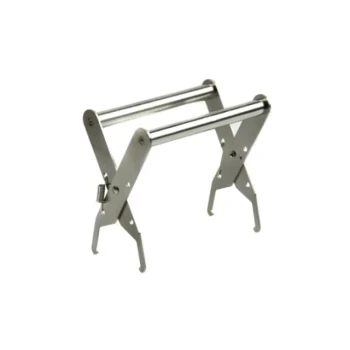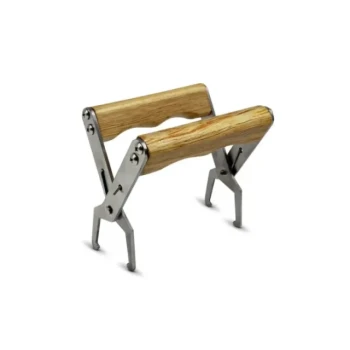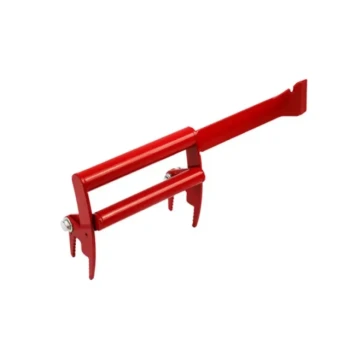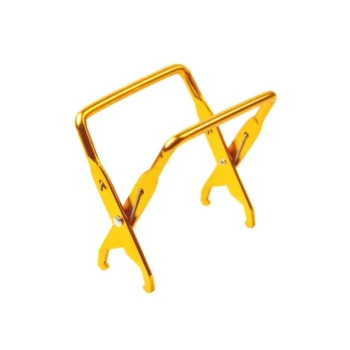At its core, the choice in beehive frames comes down to two primary materials: traditional wood and modern plastic. While both serve the essential function of providing a structure for bees to build comb, they represent different philosophies and practical trade-offs for the beekeeper.
Choosing between wood and plastic frames is less about finding a single "best" option and more about weighing the benefits of natural materials and flexibility against the advantages of convenience and durability.
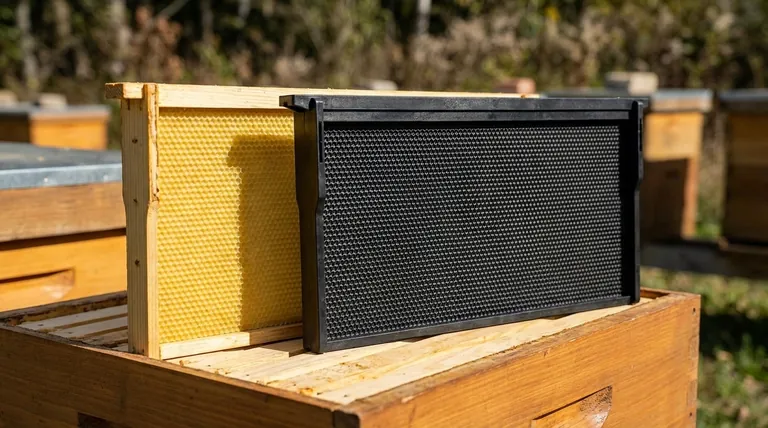
Deconstructing the Wooden Frame
Wooden frames are the traditional standard in beekeeping. They are typically sold as unassembled components that the beekeeper must put together.
The Core Components
A standard wooden frame consists of four pieces of wood nailed or stapled together: a top bar, a bottom bar, and two side bars. The top bar has extended "ears" that allow the frame to hang inside the hive box.
The Role of Foundation
Wooden frames require the separate installation of a foundation, which is a sheet imprinted with a honeycomb pattern to guide the bees' comb construction. This gives you a critical choice:
- Beeswax foundation: The most natural option, encouraging rapid acceptance by the bees.
- Plastic foundation: A durable, warp-resistant sheet that can be coated in beeswax to improve acceptance.
A Note on Frame Sizing
Frames come in different heights to match the three standard hive box depths: deep, medium, and shallow. You must ensure your frame size corresponds to your box size for proper function and bee space.
Understanding the Plastic Frame
Plastic frames are a more modern innovation, designed to simplify hive management. They have gained significant popularity for their convenience and resilience.
An All-in-One Solution
Most plastic frames are single, molded units. The frame and foundation are integrated into one solid piece, meaning they are ready to use straight out of the box with no assembly required.
Material and Durability
These frames are made from durable, food-grade plastic. Their rigid construction makes them highly resistant to warping from heat or moisture and less prone to breakage during hive inspections or honey extraction.
Understanding the Trade-offs: Wood vs. Plastic
The right choice for your apiary depends on what you value most. Each material presents a distinct set of advantages and disadvantages.
Assembly and Initial Setup
Wooden frames require assembly, which involves time and a small degree of skill. This allows for customization but adds an initial labor cost.
Plastic frames require no assembly. This significantly reduces setup time, which is a major benefit for beekeepers running many hives or those with limited time.
Durability and Longevity
Plastic frames are exceptionally tough and can withstand rough handling and the high speeds of mechanical honey extractors. They do not rot or warp.
Wooden frames, while sturdy, are more susceptible to damage. The components can break during inspections, and they can degrade over time if exposed to excess moisture.
Bee Acceptance and Natural Philosophy
Wooden frames with beeswax foundation are generally seen as the most natural option and are often accepted by bees more quickly. Many beekeepers prefer using natural, sustainable materials in their hives.
Plastic frames, while effective, can sometimes have a slower acceptance rate. Some bees may be reluctant to draw comb on a pure plastic surface, though most modern plastic frames come pre-coated with wax to mitigate this.
Pest and Disease Management
Wooden frames are porous, which can potentially harbor pathogens if not managed correctly. However, old comb can be easily cut out and replaced with a fresh foundation.
Plastic frames have a non-porous surface that is easier to clean and sanitize. Some evidence suggests their solid structure may help slow the spread of pests like wax moths.
Making the Right Choice for Your Apiary
Your goals as a beekeeper should guide your decision. There is no single correct answer, only the best fit for your specific needs.
- If your primary focus is natural beekeeping and flexibility: Choose wooden frames, as they allow you to use 100% beeswax foundation and align with traditional methods.
- If your primary focus is efficiency and ease of use: Choose plastic frames, as their no-assembly, highly durable nature will save you significant time and effort.
- If you are undecided or managing costs: Consider trying a mix of both frame types in different hives to see what works best for you and your bees.
Ultimately, the best frame is one that is properly managed and supports a healthy, productive colony.
Summary Table:
| Feature | Wooden Frames | Plastic Frames |
|---|---|---|
| Assembly Required | Yes (Top bar, bottom bar, side bars) | No (Molded, one-piece unit) |
| Durability | Can warp or break; susceptible to rot | Highly durable; warp and rot-resistant |
| Foundation | Separate (Beeswax or Plastic) | Integrated into the frame |
| Bee Acceptance | Generally high, especially with beeswax | Can be slower; improved with wax coating |
| Pest/Disease Management | Porous; requires careful management | Non-porous; easier to clean and sanitize |
| Best For | Natural beekeeping, flexibility | Efficiency, durability, large-scale operations |
Ready to Equip Your Apiary with the Right Frames?
Choosing the correct frames is critical for hive health and your operational efficiency. HONESTBEE supplies high-quality beekeeping supplies and equipment to commercial apiaries and beekeeping equipment distributors through our wholesale-focused operations.
We provide durable, reliable frames—both wood and plastic—designed to meet the demands of professional beekeeping. Let us help you build a more productive and manageable operation.
Contact HONESTBEE today to discuss your frame needs and wholesale pricing.
Visual Guide
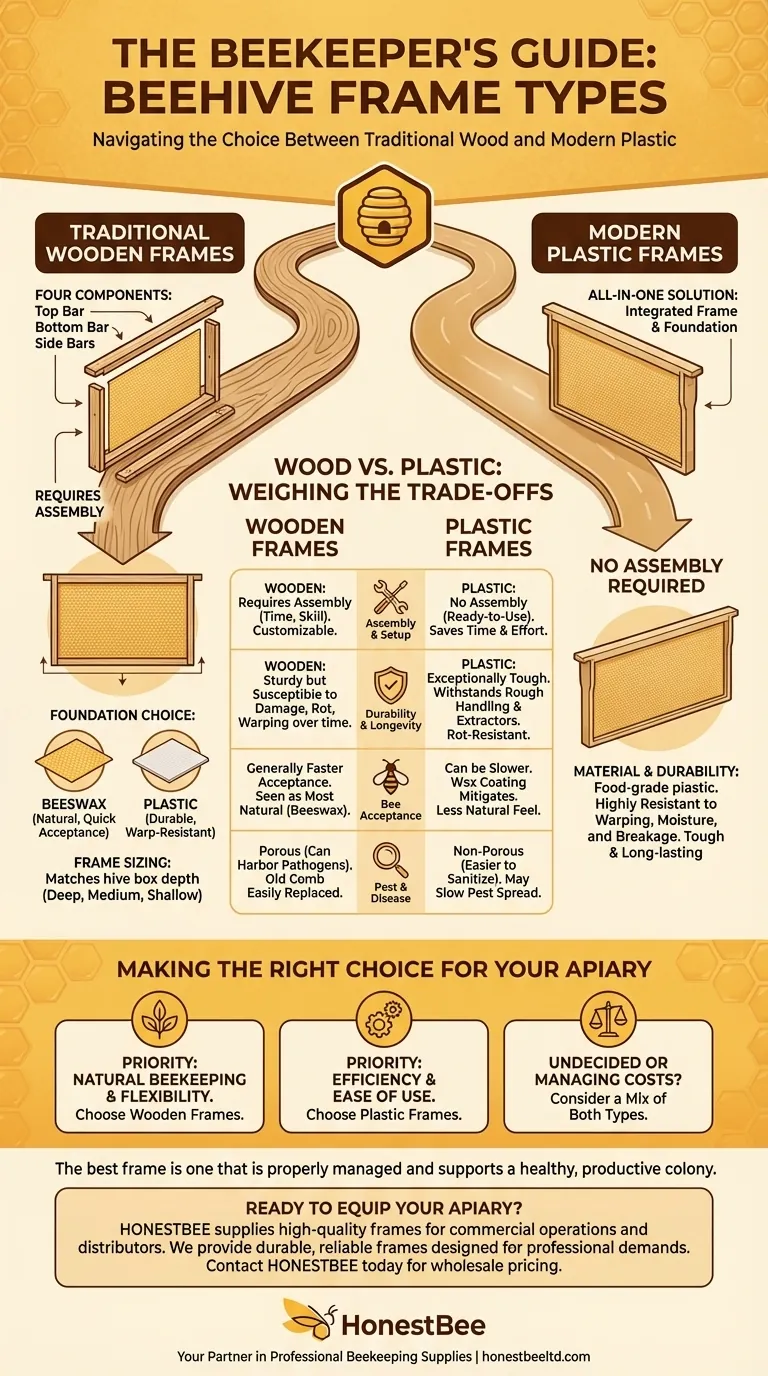
Related Products
- Plastic Bee Frame Beekeeping Hive Frames for Wholesale
- HONESTBEE Wired and Assembled Wooden Bee Frames Foundation for a Thriving Hive
- Assembled Wooden Bee Frames with Beeswax Foundation Ready to Use by HONESTBEE
- Food Grade Plastic bee Foundation for Bee Frames
- Durable Rubberized Comfort Handle Frame Grip
People Also Ask
- What are the differences between wooden and plastic frames in beehives? Choose the Best for Your Apiary
- Why are plastic frames popular in commercial beekeeping? Boost Efficiency & Durability at Scale
- What is a general rule for beekeepers with many hives regarding frame choice? Maximize Efficiency with Plastic Frames
- Are plastic frames good? Boost Apiary Efficiency with Durable, Pest-Resistant Frames
- Can beekeepers switch between wooden and plastic frames? Optimize Your Hive's Performance






